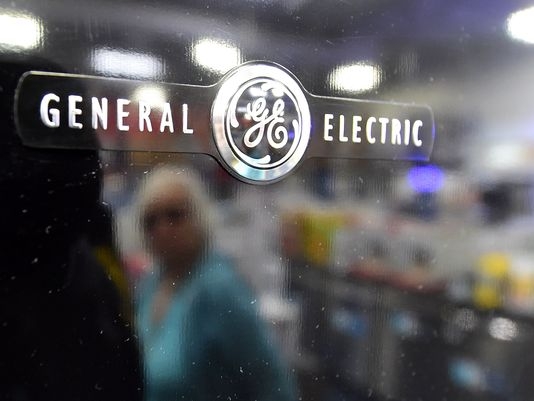General Electric breaks off healthcare to focus on power, aviation
 |
| General Electric breaks off healthcare to focus on power, aviation, (Photo: FREDERIC J. BROWN, AFP/Getty Images) |
John Flannery, GE's chief executive, hailed the new corporate plan as a rebirth for the long-suffering company, which he said would slash debts and stabilise its balance sheet as a leaner, more focused enterprise.
"We will run GE in a fundamentally different way going forward," he said on a conference call.
The result will be a "new GE, a high-tech, industrial GE, a simpler, stronger and more focused company," Flannery said.
GE shares rallied on the announcement, although some analysts rued the effect of divesting health care, a stable source of cash and earnings. S&P Global Ratings placed the company on credit watch negative for a possible downgrade.
The unveiling of the plan came on GE's first day of trading outside the Dow after it was dropped from the prestigious index because of its low stock price.
GE will sell its stake in oil field services giant Baker Hughes, in which it holds a 62.5 per cent stake, within two to three years.
However, it will "immediately" begin the 12-to-18-month process of separating from its health care segment, Flannery said.
The Baker Hughes exit comes less than a year after GE acquired a controlling stake in the company for US$32 billion.
By 2020, this will reduce company debts by US$25 billion, or two and a half times earnings, while slashing corporate costs by US$500 million, according to Flannery.
HEALTHCARE SALE
GE expects to generate cash from 20 per cent of the value of GE Healthcare, while returning the remaining 80 per cent to shareholders in a tax-free distribution.
But the health care sale "leaves the company with less business diversity, earnings and cash flow and as such, potential for heightened volatility in profits and cash flow," S&P said.
"However, debt reduction and substantial cash balances will reduce balance sheet risk," the ratings agency said.
A note from JPMorgan Chase predicted GE would cut its dividend following the health care transaction.
RESTRUCTURING WILL BE 'FINISHED'
Flannery became CEO last summer, replacing Jeffrey Immelt, as the company worked to right the ship after struggling for years.
Since then, GE has trimmed costs, streamlined its board, cut its dividend and revamped employee compensation. The company also announced plans to sell US$20 billion in industrial assets.
Flannery previously signalled he was willing to consider a complete breakup of the company.
However, he said on Tuesday there were operational advantages to keeping the remaining segments together. He told CNBC the company will be "finished" restructuring when Tuesday's changes are implemented.
The company announced in April it had set aside US$1.5 billion in reserves for possible settlement with the Justice Department stemming from the sub-prime activities at GE Capital, and Tuesday the firm said it will slash assets in the financing arm by US$25 billion.
Last month, the company announced it would merge its transportation arm with railroad manufacturer Wabtec in an US$11 billion deal.
And GE on Monday announced the sale of its industrial gas engine business to Advent International for US$3.25 billion.
In the power segment, where Flannery said results had been "unacceptable," the company still expects to have a "fundamentally strong franchise," in part by continuing to service its existing base of installed turbines and power generation facilities.
Shares of GE closed up 7.8 per cent to US$13.74 in New York.
What the stars mean:
★ Poor ★ ★ Promising ★★★ Good ★★★★ Very good ★★★★★ Exceptional
Related Contents
Latest News
More News
- Businesses ramp up production as year-end orders surge (December 30, 2025 | 10:05)
- Vietjet chairwoman awarded Labour Hero title (December 29, 2025 | 13:06)
- How to unlock ESG value through green innovation (December 29, 2025 | 10:03)
- AI reshapes media and advertising industry (December 29, 2025 | 08:33)
- FPT and GELEX sign deal to develop blockchain tech for global markets (December 29, 2025 | 08:29)
- Vietnam’s GDP forecast to grow by 9 per cent in 2026 (December 29, 2025 | 08:29)
- Women entrepreneurs are key to Vietnam’s economic growth (December 29, 2025 | 08:00)
- Vietnam's top 500 value-creating enterprises announced (December 27, 2025 | 08:00)
- The PAN Group shaping a better future with ESG strategy (December 26, 2025 | 09:00)
- Masan Consumer officially lists on HSX, marking the next phase of value creation (December 25, 2025 | 13:20)

 Tag:
Tag:





















 Mobile Version
Mobile Version